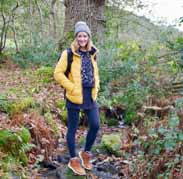RHS Anatomy & Physiology: Muscle Contraction Steps – Flashcards
Unlock all answers in this set
Unlock answersquestion
Step 1
answer
Action potential (AP) propagates along neurolemma to the synaptic end bulb.
question
Step 2
answer
The AP causes a triggering of vesicle movement toward the synapse.
question
Step 3
answer
Acetylcholine (ACh) filled vesicles fuse with membrane and undergo exocytosis.
question
Step 3
answer
Acetylcholine (ACh) filled vesicles fuse with membrane and undergo exocytosis.
question
Step 4
answer
ACh is released into synaptic cleft in search of ACh receptors.
question
Step 5
answer
ACh binds causing ligand-gated ion channels to open allowing an influx of sodium ions.
question
Step 6
answer
This triggers the muscle impulse along the sarcolemma and into the T-tubules.
question
Step 7
answer
The muscle impulse propagates along the T-tubules triggering the sarcoplasmic reticulum (SR) to release calcium ions into the sarcoplasm.
question
Step 8
answer
Calcium binds to troponin causing the troponin-tropomyosin complex to move.
question
Step 9
answer
This movement causes the myosin-binding sites to become uncovered on the actin triggering the contraction cycle.
question
Step 10
answer
The myosin attaches to the actin forming a cross-bridge.
question
Step 11
answer
The pocket on the myosin head then opens, rotates, and releases the ADP.
question
Step 12
answer
This action creates force pulling the actin toward the M-line.
question
Step 13
answer
At this point, the ADP is released from the myosin head, triggering the power stroke.
question
Step 14
answer
ATP then binds to the myosin head causing it to release the thin filament.
question
Step 15
answer
ATP is hydrolyzed by the enzyme acetylcholinesterase (AChE) on the myosin head.
question
Step 16
answer
The myosin continues to hold onto the ADP and phosphate while being energized.
question
Step 17
answer
This cycle continues as long as ATP and calcium are available.
question
Step 18
answer
Once the AP ceases, the SR calcium release channels close.
question
Step 19
answer
Active transport pumps bring calcium into the sarcoplasmic reticulum.
question
Step 19
answer
Active transport pumps bring calcium into the sarcoplasmic reticulum.
question
Step 19
answer
Active transport pumps bring calcium into the sarcoplasmic reticulum.



